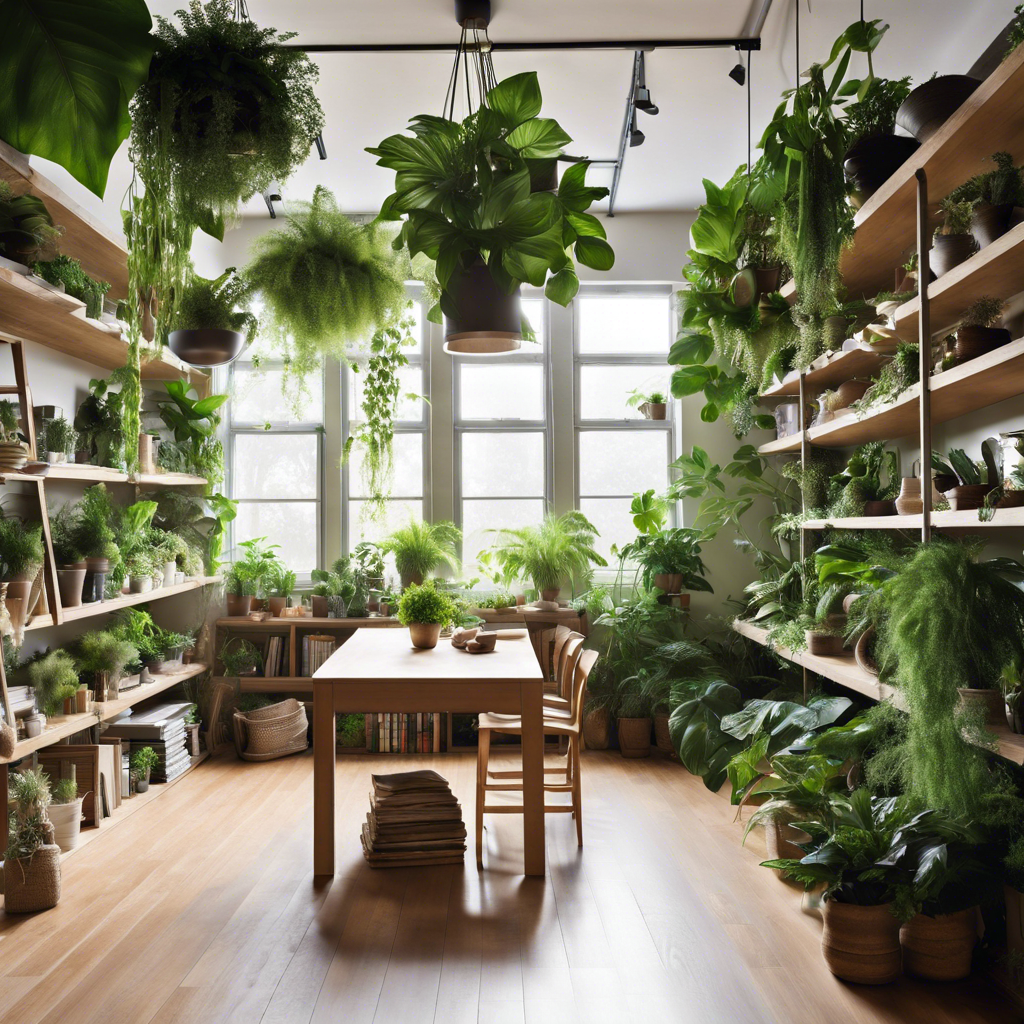
Indoor plants
Rubber Plant (Ficus elastica) – The Complete Guide to Growing and Caring for This Striking Indoor Plant


DINKAR
10/22/2024
Introduction
The Rubber Plant (Ficus elastica) is a stunning, easy-to-grow houseplant that has been a favorite among indoor gardeners for years. With its large, glossy, dark green leaves, the Rubber Plant adds a touch of elegance and sophistication to any room. Not only is it an eye-catching plant, but it also boasts air-purifying qualities, making it a valuable addition to your indoor environment.
This comprehensive guide covers everything you need to know about growing and caring for the Rubber Plant, from understanding its origins to providing practical care tips and propagation techniques. Whether you're a beginner plant parent or an experienced indoor gardener, this guide will help you ensure your Rubber Plant thrives in your home.
1. What is a Rubber Plant (Ficus elastica)?
The Rubber Plant, scientifically known as Ficus elastica, is a member of the fig family Moraceae. Native to Southeast Asia, this plant was originally grown for its latex-producing capabilities, which were once used to make rubber. Today, it is primarily grown as an ornamental plant in homes and offices.
The Rubber Plant is known for its bold, leathery leaves that can vary in color from deep green to burgundy, depending on the variety. It is a relatively low-maintenance plant that can grow as a tree or be kept compact with regular pruning. While it can grow up to 100 feet tall in its natural habitat, indoor Rubber Plants typically reach a manageable height of 6-10 feet.
2. Types of Rubber Plants
While the classic Rubber Plant with dark green leaves is the most well-known variety, there are several others that offer unique visual appeal:
- Ficus elastica ‘Robusta’: This is the traditional Rubber Plant variety with large, glossy green leaves. It’s a fast-growing, easy-to-care-for plant that thrives in most indoor environments.
- Ficus elastica ‘Burgundy’: This variety has stunning dark purple or nearly black leaves. The deep color makes it a striking focal point in any room.
- Ficus elastica ‘Tineke’: Known for its variegated leaves, the Tineke variety has cream, green, and pink hues. Its light-colored leaves make it a standout in any plant collection.
- Ficus elastica ‘Ruby’: Similar to Tineke, the Ruby variety has variegated leaves, but with more pronounced pink and red undertones, adding a pop of color to your indoor space.
3. How to Care for a Rubber Plant
Rubber Plants are relatively low-maintenance, but they do have specific care requirements that will ensure they thrive in your home.
A. Light Requirements
Rubber Plants prefer bright, indirect light. Too much direct sunlight can scorch their leaves, while too little light can cause the plant to become leggy or lose its vibrant color. Ideally, place your Rubber Plant near a south or east-facing window, where it can receive bright, filtered light.
If your plant is not getting enough light, its leaves may begin to fade, and its growth may slow down. On the other hand, too much direct sunlight can cause the leaves to develop brown spots or edges.
B. Watering
Watering is one of the most critical aspects of caring for a Rubber Plant. These plants like to dry out slightly between waterings, so it's important not to overwater them. Water your Rubber Plant when the top inch or two of soil feels dry to the touch. Be sure to use a pot with drainage holes to prevent water from accumulating in the soil, as this can lead to root rot.
During the growing season (spring and summer), Rubber Plants will need more frequent watering. In fall and winter, reduce watering as the plant's growth slows down.
C. Humidity and Temperature
Rubber Plants thrive in moderate to high humidity levels. While they can tolerate the average indoor humidity, misting their leaves occasionally or placing a humidifier nearby can help maintain healthy, vibrant foliage.
As for temperature, Rubber Plants prefer warm environments between 60°F and 85°F (16°C to 29°C). They do not tolerate cold drafts, so keep them away from windows or doors that might let in cold air, especially during the winter months.
D. Soil and Potting
Rubber Plants do well in well-draining, aerated soil. A standard indoor potting mix is usually sufficient, but you can improve drainage by adding perlite or sand to the mix.
Rubber Plants enjoy being slightly root-bound, so they don’t need to be repotted frequently. However, if you notice roots poking out of the drainage holes, or if the plant becomes top-heavy, it’s time to repot. Repotting should be done every 1-2 years, preferably in spring when the plant is in its active growing phase.
E. Fertilization
To promote healthy growth, feed your Rubber Plant with a balanced, water-soluble fertilizer every month during the growing season (spring and summer). Reduce fertilization in fall and winter when the plant’s growth slows. Avoid over-fertilizing, as it can lead to excessive growth and weak stems.
4. Propagating Rubber Plants
Rubber Plants are relatively easy to propagate, allowing you to grow new plants from stem cuttings. Here’s a step-by-step guide to propagating your Rubber Plant:
Step-by-Step Propagation Guide:
- Choose a Healthy Stem: Look for a healthy, mature stem with at least one leaf and a visible node (the point where a leaf meets the stem).
- Make a Cut: Using clean, sharp scissors or pruning shears, make a clean cut just below the node. You can also dip the cut end in rooting hormone to encourage faster root growth.
- Place in Water or Soil: You can propagate Rubber Plants in water or soil. If propagating in water, place the cutting in a jar of water, ensuring the node is submerged. Change the water every few days to prevent bacteria buildup. If using soil, plant the cutting in a small pot with well-draining soil.
- Wait for Roots: It can take a few weeks for roots to develop. Once the roots are about an inch long, you can transplant the water-propagated cutting into soil. Keep the new plant in a bright, warm spot and water it regularly.
5. Common Problems and Solutions
While Rubber Plants are hardy, they can occasionally run into problems. Here are some common issues and how to address them:
- Yellowing Leaves: Overwatering is the most common cause of yellowing leaves. Allow the soil to dry out between waterings and make sure the pot has adequate drainage.
- Dropping Leaves: This can be caused by sudden changes in temperature, such as exposure to cold drafts or moving the plant to a new location. Keep your Rubber Plant in a stable environment and avoid drastic changes.
- Brown Leaf Tips: Low humidity or inconsistent watering can cause the tips of the leaves to turn brown. Increase the humidity around the plant and ensure you’re watering it consistently.
- Leggy Growth: If your Rubber Plant is becoming leggy, it’s likely not receiving enough light. Move the plant to a brighter location where it can get more indirect sunlight.
- Pests: Common pests that may affect Rubber Plants include spider mites, mealybugs, and aphids. Treat infestations by wiping the leaves with a damp cloth and using insecticidal soap or neem oil.
6. Benefits of Having a Rubber Plant Indoors
Rubber Plants are more than just a pretty addition to your home—they offer several benefits that make them an ideal indoor plant:
- Air Purification: Like many houseplants, Rubber Plants help improve indoor air quality by removing harmful toxins such as formaldehyde, carbon monoxide, and benzene from the air.
- Low Maintenance: Rubber Plants are relatively low-maintenance, making them ideal for busy individuals or those new to plant care. With minimal effort, they will grow into large, beautiful plants that enhance any living space.
- Aesthetic Appeal: The striking, glossy leaves of Rubber Plants add a sense of sophistication and elegance to any room. Their upright growth habit makes them perfect for floor pots or as a statement piece in corners.
Conclusion
The Rubber Plant (Ficus elastica) is a fantastic addition to any indoor garden. With its bold, glossy foliage and relatively low-maintenance care requirements, it’s no wonder that this plant has been a favorite among indoor plant enthusiasts for years. Whether you’re looking to add a statement plant to your home or simply want an air-purifying plant that’s easy to care for, the Rubber Plant is an excellent choice.